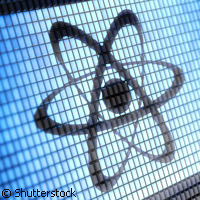Astrophysics: second phase of LAGUNA gets underway!
The second phase of a major EU-funded project focused on the construction of a next-generation neutrino observatory has just begun. This part of the project aims to assess how feasible it is to create a pan-European research infrastructure able to host the very large volume, deep-underground neutrino observatory. Running until 2014 and involving scientists from all around the world, the project LAGUNA-LBNO ('Design of a pan-European Infrastructure for large apparatus studying grand unification, neutrino astrophysics and long baseline neutrino oscillations') is funded in part by EUR 4 900 000 under the 'Capacities' Theme of the EU's Seventh Framework Programme (FP7). It follows on from the first phase of the project, known as LAGUNA, that started in 2008 and was funded under the same FP7 theme. Many key questions in physics can only be answered by constructing a giant underground observatory to search for rare events and study terrestrial and astrophysical neutrinos. Such an observatory can help scientists expand the knowledge base in neutrino astrophysics and address several fundamental questions that surround proton decay and the existence of a new source of matter-antimatter asymmetry in nature. This will further our understanding of why our Universe contains only matter, rather than equal amounts of matter and antimatter. Underground neutrino detectors based on large, surface-instrumented, liquid volumes have achieved fundamental results in particle and astroparticle physics, and have been able to simultaneously collect events from several different cosmic sources. Neutrinos interact very weakly with matter, so they can travel very large distances in space and traverse dense zones of the Universe, therefore providing unique information on their sources. The LAGUNA-LBNO team believe that to combine these two technologies, a next-generation, very large, multipurpose, underground neutrino observatory with a total mass of around 100 000 to 500 000 tonnes is needed. The first phase of the project (LAGUNA) involved studying seven pre-selected potential locations in Spain, France, Italy, Poland, Romania, Finland and the United Kingdom, and providing a detailed geotechnical assessment of the giant underground cavern. The conclusion was that no geotechnical barriers to cavern construction exist. This second phase of the project will now build on these preliminary findings and address two challenges vital to making a final detector and site choice: determining the full cost of underground construction, commissioning and long-term operation of the infrastructure; and determining the full impact of long baseline neutrino beams from the European Organization for Nuclear Research (CERN). The LAGUNA project is one of the 'Magnificent Seven', major research infrastructures that will hopefully help scientists answer key questions about the nature of the Universe. All seven large infrastructure projects are included in the European Roadmap for astroparticle physics developed as part of the EU-funded ASPERA ('Astroparticle European Research Area') project, which brings together European national funding agencies responsible for astroparticle physics. It is hoped that the LAGUNA project will ensure that Europe continues to be a leader in deep underground physics. Scientists working on the project hail from research institutions in Finland, France, Germany, Greece, Italy, Japan, Poland, Romania, Russia, Spain, Switzerland and the United Kingdom.For more information, please visit:European Organization for Nuclear Research:http://public.web.cern.ch/public/
Countries
Switzerland, Germany, Greece, Spain, Finland, France, Italy, Japan, Poland, Romania, Russia, United Kingdom



